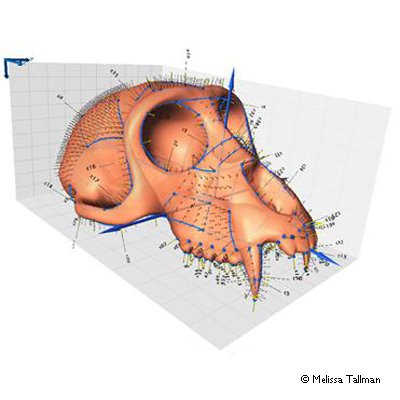
Submitted 10 October 2018 by Soledad De Esteban Trivigno

The 8th edition of Transmitting science course "3D Geometric Morphometrics" has open registration. Dates and Place: January 28th – February 1st, 2019, Crete (Greece)
AAPA members have a 20 % discount!!!
Instructor: Dr Melissa Tallman (Grand Valley State University, USA).
Registration and more info: https://www.transmittingscience.org/courses/geometric-morphometrics/3d-geometric-morphometrics/ PROGRAM: Types of data acquisition: Using a microscribe. Collecting CT scans & Surface Scans. - Demonstration of Stratovan Checkpoint.
Brief Review of Fundamentals of Morphometrics: - How to choose landmarks. - Generalized Procrustes Analysis. - Other types of alignment. - Thin plate spline warping. Processing Microscribe data. - Using DVLR to merge two views. - Using resample to resample a line. Using Landmark Editor to collect data on surfaces. - Sliding semi-landmarks (using R geomorph package).
- How to do a precision test on 3D data.
- Data exploration: PCA analyses: Using Morphologika. Using MorphoJ. Between-group PCAs. PCAs in Procrustes form space.
- Visualizing shape change: Using MorphoJ in conjunction with Landmark Editor. Making calculations and visualizing shape changes in PCA morphospace. Calculating PCA scores post hoc.
- Data exploration: Regressions. Visualizing change that is associated with size (MorphoJ). Removing change associated from size from your data (MorphoJ). Common allometric trajectories. Comparing vector directions. Extracting linear dimensions from 3D data and using them as covariates.
- Data exploration: PLS analyses. Using MorphoJ to mean center (or not). Visualizing shape change in Landmark editor.
- Data exploration: Phylogeny. Visualizing shape changes in MorphoJ along a tree. Importing covariates and visualizing shape change associated with taxonomy (using MorphoJ). Creating a phyomorphospace. Correcting for phylogeny in PCA.
- Data interpretations: Using mean configurations (PAST) and Procrustes distances. Minimum spanning trees. Variability within a sample (comparing fossil distributions to extant distributions).
- Retrodeformation.
This course is organized by Transmitting Science.
Copyright © 2024 American Association of Biological Anthropologists.
Site programming and administration: Ed Hagen, Department of Anthropology, Washington State University